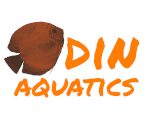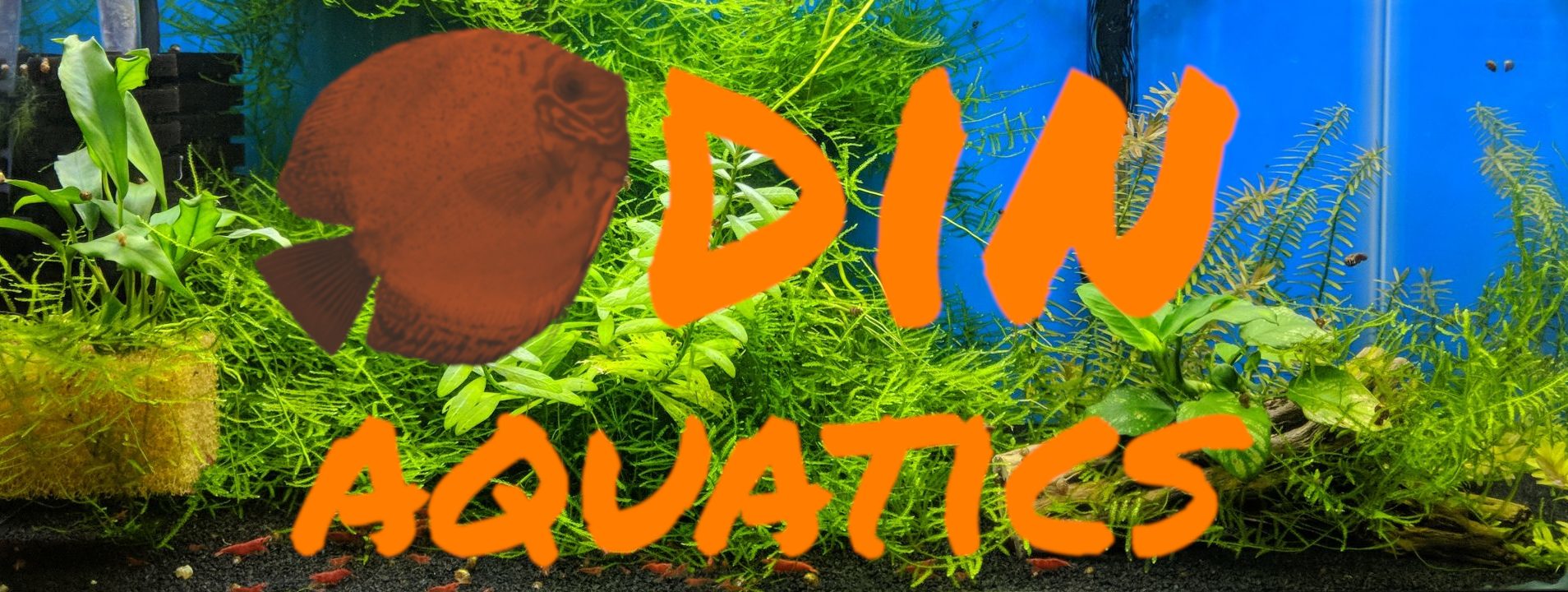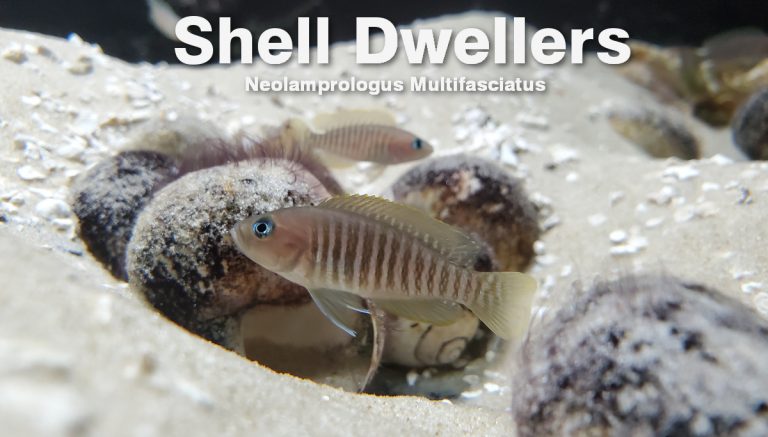Neolamprologus multifasciatus
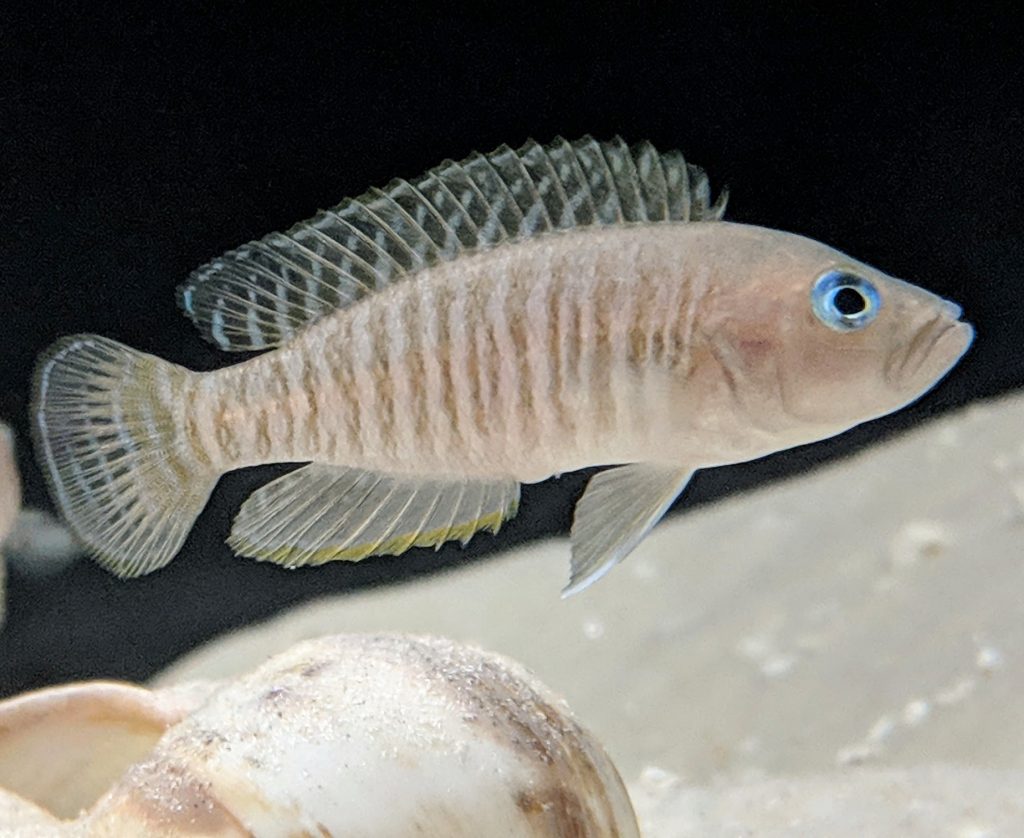
Several species of dwarf African cichlids make their homes in shells. Collectively, they are known as Shell Dwellers. The species that I keep is Neolamprologus multifasciatus, often referred to as "Multies". These fish come from the sandy, rocky bottom near the shores of Lake Tanganyika in Africa. Multies live in large colonies in the shell beds left by the lake's native Neothauma snails. This natural shell bed habitat is what the aquarist should be aiming to replicate when setting up an aquarium for Neolamprologus multifasciatus.
Lake Tanganyika

Lake Tanganyika is fascinating for a variety of reasons. It is the largest of Africa's rift lakes, the second deepest lake in the world, and it holds about 16% of the world's available fresh water. Tanganyika is home to at least 250 species of cichlids, plus other fish that are not part of the cichlid family. It is also home to dozens of species of freshwater snails and bivalves. The water in Lake Tanganyika is notoriously hard and alkaline. The PH is about 9.0, and the water is very high in calcium. Temperatures at the surface range from 75 to 84 degrees (F).
Setting up a Tanganyikan Shell Dweller Aquarium
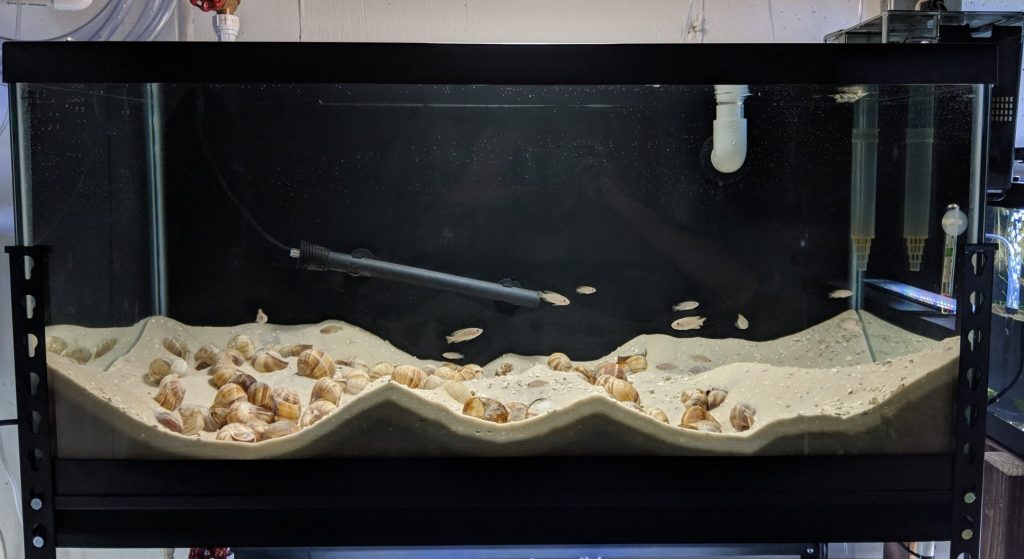
Aquarium Size for Shell Dwellers
N. multifasciatus are small cichlids: the largest males may reach 5 centimeters, while females usually top out at 2.5 cm. This diminutive size makes them a good choice for a smaller aquarium. The minimum tank size I would recommend is 10 gallons. Anything smaller will be subject to rapid fluctuations in water parameters. A 10 gallon tank could hold 1 or 2 breeding groups (6-12 fish). Use a 20 gallon long or similar high surface area format tank to show off their colony breeding behavior. Personally I keep them as the only species in a 40 gallon breeder. The large surface area provides space for about 60 shells.
Substrate for Shell Dwellers
To see Multies at their best, the aquarist should aim to recreate the conditions of their ancestral lake. Start with a relatively deep sand substrate, mixing in crushed coral or aragonite to ensure there is plenty of calcium present to keep the water buffered and the PH high. N. multifasciatus are diggers. They pick up sand in their mouths and spit it out, building hills and burrying their shells so that only the entrance is visible. I recommend a substrate depth of 2-3 inches to give them plenty of space to dig.
Snail Shells for Shell Dwellers
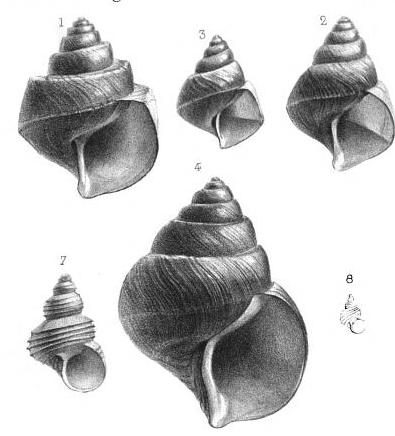
Of course, one of the most important additions for shell dwellers is the shells! In the lake they live in the discarded shells of Neothauma snails. But these snails are only endemic to Africa and the export of their shells is tightly controlled. If you are able to find legitimate Neothauma shells, expect to pay a high price. Instead, most Multi keepers use escargot shells that are commonly sold for cooking. They are very close in size to the Neothauma shells and very affordable. You will want 1 shell per adult fish, keeping in mind that these fish live in colonies, with each male guarding a small territory of 5-7 shells and their resident females.
Don't worry about aquascaping the aquarium before adding your shell dwellers, as they will move the shells and the substrate as soon as they move in. Just toss the shells in and spread them across the bottom. The fish will move and bury the shells very quickly.
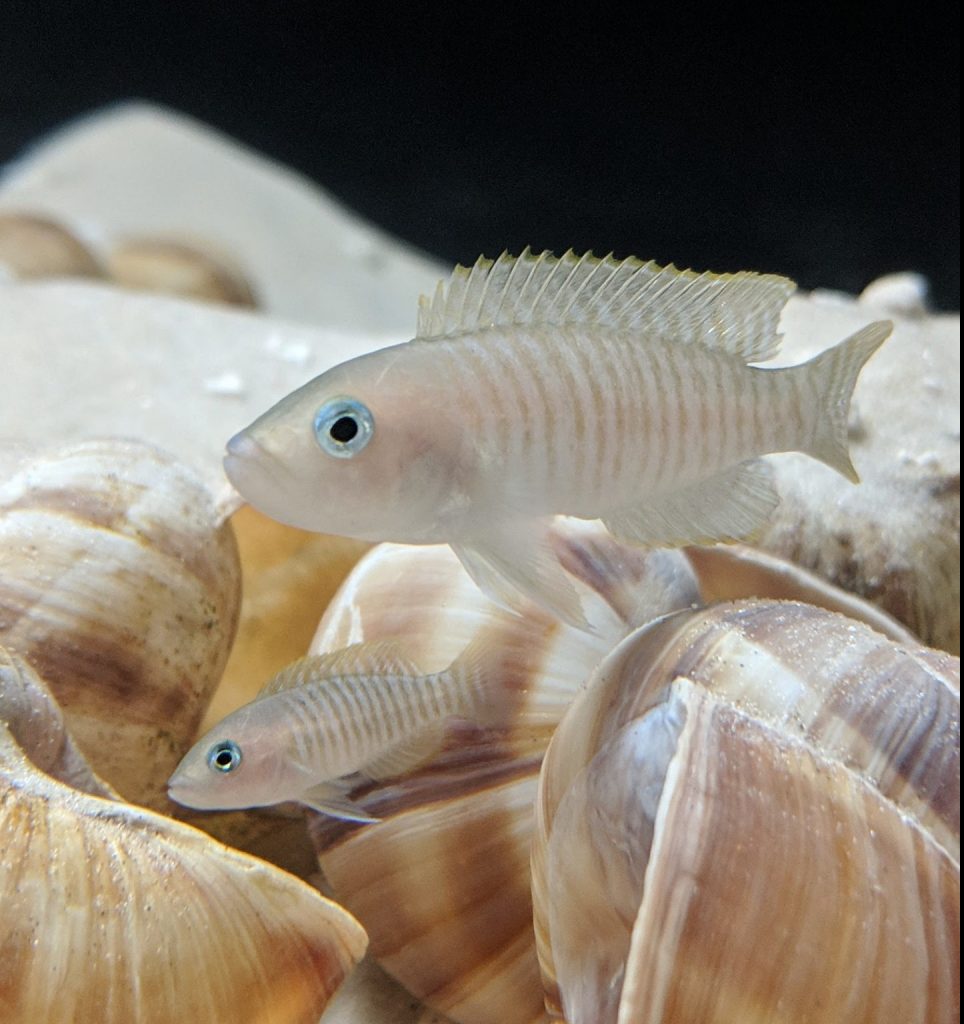
Water Parameters for Tanganyikan Shell Dwellers
In order to keep the water appropriately hard and alkaline I like to use the Seachem line of Cichlid Lake Salts and Tanganyika Buffer. These products should only be added to new water during water changes, as they do not evaporate out over time. You will need to do some testing to determine the hardness and alkalinity of your water in order to dose correctly.
Although N. multifasciatus come from a lake with a 9.0 PH, don't put too much effort into chasing that PH value. Unless you find wild caught specimens, most fish will be able to adapt to a PH closer to 8.0. Stability and consistency are more important than precision. Always be careful when adjusting PH and test the water before and after you add buffering products to prevent large swings.
Temperature for Tanganyikan Shell Dwellers
Temperature should be at the lower end of the lake's range (below 80 degrees F), as N. multifasciatus actually live at depths of 50-100 feet below the surface. I keep mine at 77 degrees F and they do very well at that temperature. Anything between 75 - 80 degrees fahrenheit should be acceptable.
Filtration for Shell Dwellers
I run an Aquaclear hang on back filter on my Multi tank. I recommend using an intake sponge to prevent fry from being sucked into the filer. A canister filter or sponge filter would both be viable options as well. Any form of filtration will work, as long as you are performing regular water changes. Your preferred maintenance routine should determine the filter you use.
Breeding Neolamprologus Multifasciatus
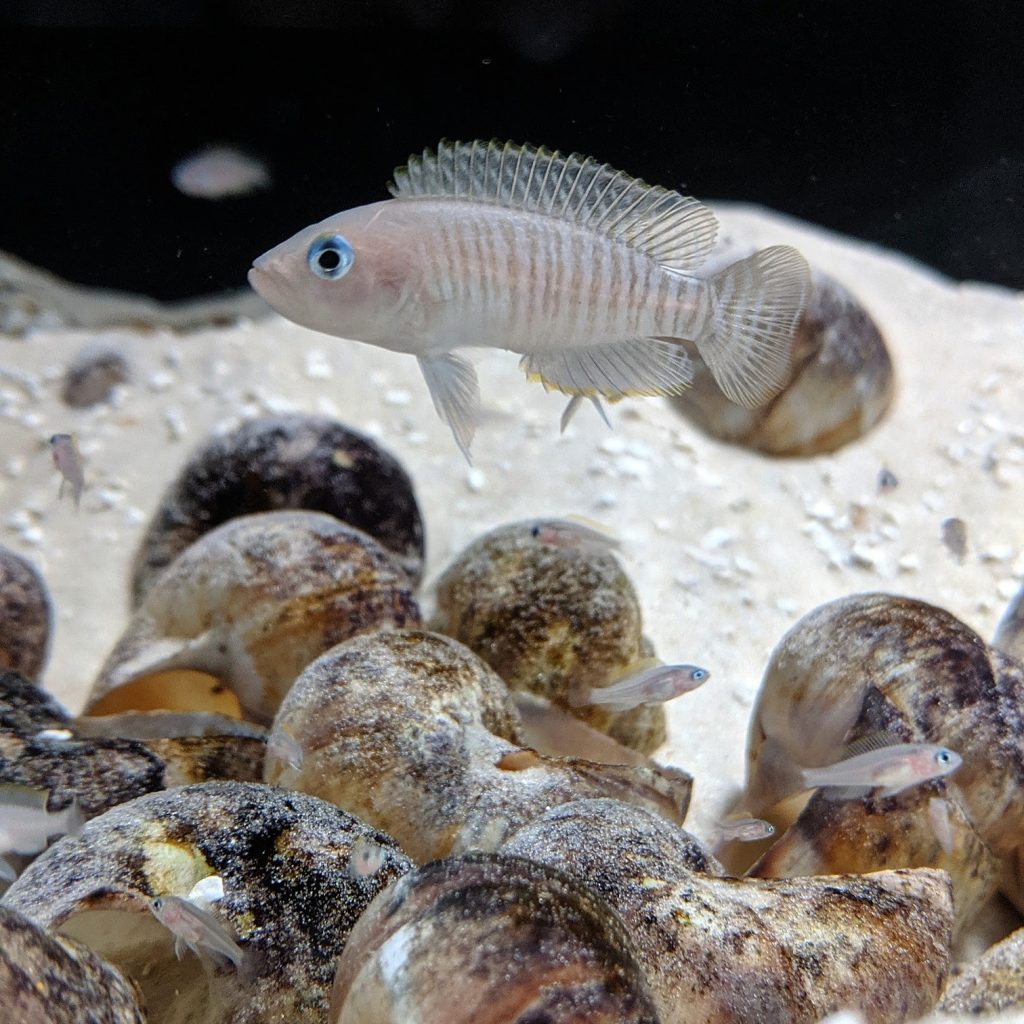
Shell dwellers are one of the easier fish to breed as long as you are providing them with clean water and the right conditions. Males will compete for control of a harem of several females. Breeding takes place in the shells and the fry will be born inside of a shell. Feeding a good variety of quality frozen and live foods will usually stimulate breeding. I like to offer live or frozen baby brine shrimp, microworms, krill flake, and spirulina flake. Live daphnia, frozen cyclops, or any similar food will also work.
The first sign of breeding activity is usually a group of small fry poking their heads out of a shell. The fry will be able to eat microworms, crushed flake, and live baby brine as soon as they are big enough to leave the shell. They will remain within a couple inches of their home shell for the first few weeks of their life.
Eventually you will end up with more fish than shells, which is the limiting factor on the size of the colony. At this point some fish should be removed and rehomed to avoid over crowding. Fortunately Multies are typically an easy fish to get rid of due to their small size and amazing behavior.
